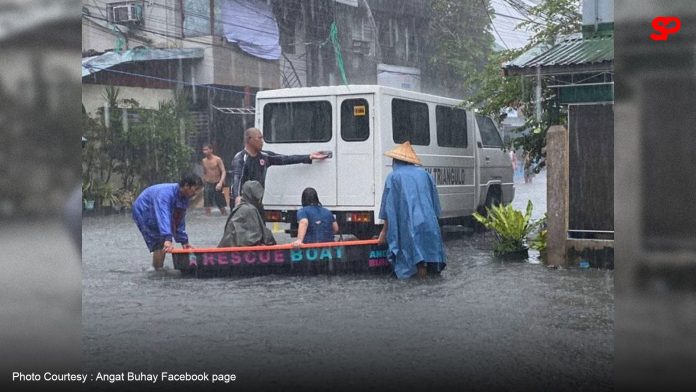By Michelle Ducut
As Typhoon Kristine ravaged parts of the Philippines, particularly the Bicol Region, the overwhelming sense of community that emerged in the face of destruction provided a powerful testament to the enduring Filipino value of bayanihan. Despite being separated by geographical distance, Filipinos around the country, and even abroad, rallied together to assist those affected, proving that in times of disaster, solidarity and compassion transcend physical boundaries.
Historically, the Philippines has been prone to natural disasters due to its geographic location. The country lies along the so-called typhoon corridor, making it highly susceptible to typhoons, and the Pacific Ring of Fire which puts it in frequent danger due to earthquakes, and volcanic eruptions.
In fact, the Philippines consistently ranks among the top countries in the world on the Global Disaster Risk Index, which measures a country’s exposure and vulnerability to natural hazards. According to the World Risk Report 2023, the Philippines is ranked as one of the most disaster-prone countries globally, with a high risk of severe damage from typhoons and flooding. This exposure to natural calamities has shaped the Filipino way of life and fostered a resilient spirit grounded in the concept of bayanihan.
The term bayanihan, derived from the Filipino word bayan, meaning nation or community, refers to the traditional practice of mutual aid, where members of a community come together to help one another. Traditionally, this concept was illustrated when neighbors physically lifted and moved houses in rural villages, a practice symbolizing cooperation, unity, and selflessness. However, bayanihan has evolved, particularly in times of calamity, where it now embodies the larger idea of communal solidarity—people offering time, resources, and support, regardless of the distances that may separate them.
The response to Typhoon Kristine was no exception. As floodwaters submerged entire towns and displaced thousands of families, social media became a tool for modern-day bayanihan, facilitating donation drives, fundraising efforts, and rescue missions. People from different provinces, cities, and even overseas sent monetary aid, relief goods, and volunteered their time to help with rescue and recovery operations. The sight of ordinary citizens—alongside local government units, NGOs, and the private sector—working hand-in-hand to distribute food packs, shelter supplies, and essential goods to the displaced mirrored the essence of bayanihan. It was a collective effort to rebuild communities, an embodiment of unity amidst adversity.
Yet, while the sense of community remained strong, the devastation brought by Typhoon Kristine also exposed the ongoing systemic challenges that leave the Philippines vulnerable to such disasters. Despite the country’s long history of being disaster-prone, the infrastructure, particularly in rural and coastal areas, remains inadequate. Flood control projects, such as the P61 billion initiative meant to protect Bicol, have raised questions about where resources are going and why flood mitigation remains insufficient. This raises a deeper concern: bayanihan may help people survive the immediate aftermath of a disaster, but long-term disaster risk reduction requires systemic improvements and accountable governance.
But, the government’s preparation for natural disasters has often been reactive rather than proactive. The country may have a strong culture of helping one another when disaster strikes, but the glaring question is why, despite decades of experience with typhoons and other calamities, preparedness and resilience-building measures remain deficient.
The Philippines’ position on the Global Disaster Risk Index should serve as a wake-up call. More than just relying on the spirit of bayanihan in the aftermath of disasters, the nation needs to invest heavily in disaster preparedness and risk reduction. This includes improving early warning systems, upgrading infrastructure, and addressing the root causes of vulnerability, such as poverty and inequality. Long-term solutions, rather than short-term fixes, are critical in ensuring that communities are better equipped to withstand future disasters.
Typhoon Kristine, like many calamities before it, brought both destruction and a reminder of the strength of the Filipino spirit. The sense of community, of Filipinos coming together despite geographical distance, once again highlighted the cultural bedrock of bayanihan. However, while the resilience of the Filipino people remains admirable, the constant cycle of destruction and recovery underscores the need for a more proactive and sustainable approach to disaster management.
The challenge for the Philippines is to ensure that bayanihan complements, rather than substitutes, a comprehensive national disaster preparedness strategy. Only by addressing the systemic gaps can we ensure that the communities so often ravaged by typhoons like Kristine are better protected in the future.

